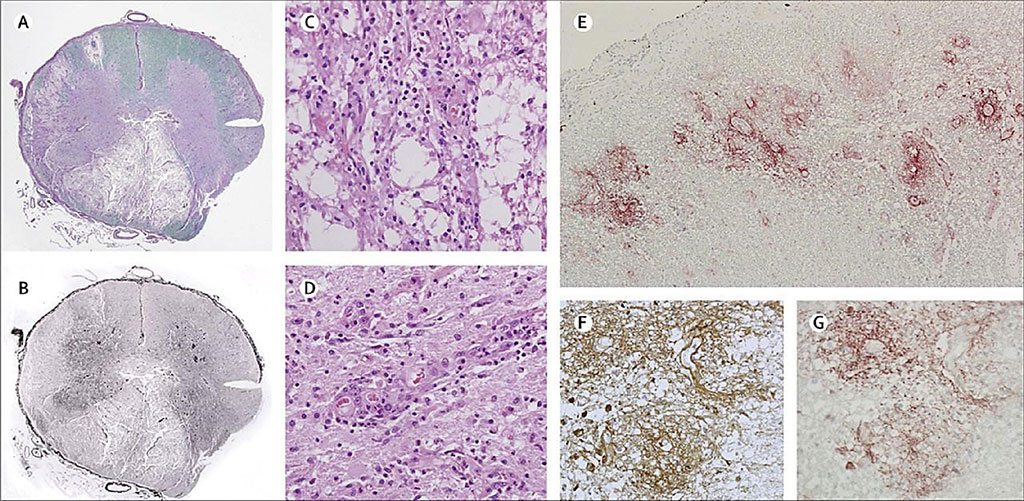African-American MS Patients Experience More Rapid B-Cell Repopulation
By LabMedica International staff writers
Posted on 06 May 2021
Multiple sclerosis (MS) is a potentially disabling disease of the brain and spinal cord (central nervous system). In MS, the immune system attacks the protective sheath (myelin) that covers nerve fibers and causes communication problems between the brain and the rest of the body.Posted on 06 May 2021
Neuromyelitis optica spectrum disorder (NMOSD), also known as Devic disease, is a chronic disorder of the brain and spinal cord dominated by inflammation of the optic nerve (optic neuritis) and inflammation of the spinal cord (myelitis). Classically, it was felt to be a monophasic illness, but the interval between attacks may be weeks, months or years. In its early stages, NMOSD may be confused with multiple sclerosis (MS).

Image: Histology showing pathological and immunopathological findings from a spinal cord lesion from a 52-year-old woman who died from active neuromyelitis optica associated with a longitudinally extensive spinal cord lesion extending from C3 to T8 (Photo courtesy of CHU de Strasbourg)
Medical Scientists from the NYU Grossman School of Medicine (New York, NY, USA) enrolled in a retrospective cross-sectional study, 168 patients, including 61 African-American patients, 60 white patients, and 47 who identified as other races; about 19% were Hispanic. About 80% of the patients were diagnosed with multiple sclerosis, and 19% had neuromyelitis optica spectrum disorder. The team also looked at the types of B cells being repopulated and found there were no differences between African-Americans and whites in the makeup of the cells.
The team reported that in the 6 to 12 months after undergoing treatment with rituximab or ocrelizumab to deplete B cells, African-Americans patients were more than twice as likely to have B cell repopulation compared with white patients (76% versus 33%). In the four to six months following treatment, however, repopulation of B cells was about the same in both groups, at roughly 21% in the African-American patients compared with 18% in the white patients. No patients had B cell repopulation within four months of treatment. At four to six months, 23% had B cell repopulation and by after 10 months, 90% had repopulation of their B cells.
Lucia Saidenberg, MD, an author of the study, said, “Anti-CD20 therapy, including rituximab and ocrelizumab, are highly effective treatments for multiple sclerosis and neuromyelitis optica spectrum disorder and are known to cause a near complete depletion of B cells in the blood soon after infusion. However, repopulation of B cells following anti-CD20 infusion has not been well studied in these patients, particularly not in African-American patients, who are underrepresented in clinical trials for these drugs and tend to have more severe disease and faster disease progression compared to white patients with multiple sclerosis.” The study was presented at the American Academy of Neurology virtual meeting held April 17-22, 2021.
Related Links:
NYU Grossman School of Medicine













